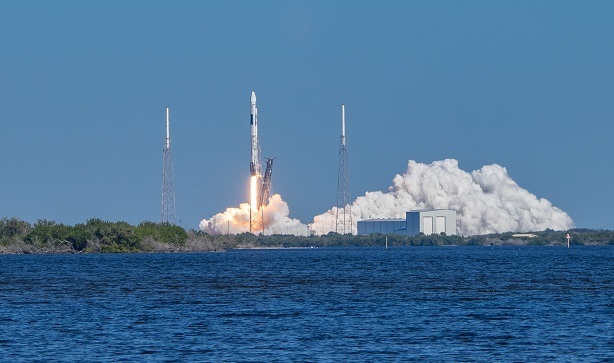
 Data Structure
Data Structure Networking
Networking RDBMS
RDBMS Operating System
Operating System Java
Java MS Excel
MS Excel iOS
iOS HTML
HTML CSS
CSS Android
Android Python
Python C Programming
C Programming C++
C++ C#
C# MongoDB
MongoDB MySQL
MySQL Javascript
Javascript PHP
PHP
- Selected Reading
- UPSC IAS Exams Notes
- Developer's Best Practices
- Questions and Answers
- Effective Resume Writing
- HR Interview Questions
- Computer Glossary
- Who is Who
What is the full form of ESA?
Introduction
European Space Agency (ESA) is a worldwide association laid out in 1975, fully intends on cultivating European country-to-country joint effort in space examination and investigation. Currently, 22 parts nations make up the ESA, including France, Germany, Italy, and the Unified Realm, as well as various teaming-up states and accomplice countries.

The mission of the ESA involves performing scientific research, producing and deploying satellites, and coordinating global space initiatives. The Agency's fundamental areas of interest incorporate Earth perception, media communications, route, human spaceflight, and investigation of the planetary group. ESA likewise handles the European International Space Station (ISS) component.
History of ESA
When various European countries began cooperating on space study and advancement in the last part of the 1950s and mid-1960s, the European Space Agency (ESA) was conceived. To create a European space launcher, the European Launcher Development Organisation (ELDO) was founded in 1962, but it encountered considerable technological and financial challenges.
The European Space Conference was established in 1973 due to a gathering of European space experts in Munich, Germany. The ESC suggested the establishment of a new space agency to oversee and finance European space operations. On May 30, 1975, ten European countries marked the ESA Show, which brought about the production of the European Space Agency.
The main European correspondence satellite was sent off in 1977, followed by the principal European remote detecting satellite in 1986 and the Huygens mission that landed on Saturn's moon Titan in 2005.
Since the International Space Station (ISS) project, ESA has likewise been associated with human spaceflight, with ESA space explorers partaking in ISS missions around 2001. ESA has recently worked on new launch vehicle development, including the Vega and Ariane rockets and the advancement of reusable spacecraft research.
With an extensive variety of logical, specialized, and exploratory missions pointed toward growing human comprehension of the universe and upgrading life on Earth through satellite-based innovation, ESA is, at present, one of the biggest space associations on the planet.
Objectives of ESA
The European Space Agency (ESA) has a wide assortment of objectives intended to develop life on Earth through science-based applications further while expanding logical comprehension and new mechanical turn of events. Coming up next are a portion of ESA's primary objectives
Expanding how we might interpret science The European Space Agency (ESA) explores various logical disciplines, including astronomy, stargazing, the investigation of the planets, perceptions of the Earth, and life sciences. Its missions are intended to extend our insight into the universe and our part in it.
New technology development ESA is creating cutting-edge equipment with earthbound and space uses. These encompass cutting-edge telecommunications, robotics, and propulsion systems.
Advancing worldwide participation ESA works intimately with other global space Agencies, like NASA, the Russian Space Agency, and the China Public Space Agency, to improve space investigation and logical exploration.
Supporting European industry To develop new space technologies, generate employment, and promote economic growth, ESA works in conjunction with European industry.
Addressing global challenges ESA's earth-observing missions offer vital information on climate change, catastrophic events, and other environmental concerns that impact people worldwide. The agency's technological advancements might address major world problems, including transportation, energy, and healthcare.
Inspiring the next generation The ESA's educational and outreach initiatives, which include student contests, scientific camps, and public events, are aimed at inspiring and involving the next generations of researchers, engineers, and space enthusiasts.
Achievements of ESA
Since its establishment in 1975, the European Space Agency (ESA) has achieved a few imperative accomplishments. The following are a couple of its significant achievements
It creates and conveys satellites for logical review, media communications, routes, and Earth perception. There are a few instances of this, for example, the primary European media communications satellite correspondence (1977), the main European Earth perception satellite (1986), the Huygens test that arrived on Titan, a moon of Saturn, in 2005, and the Gaia space observatory that is presently planning the Smooth Way (2013).
ESA is doing an earth-shattering logical exploration in disciplines including stargazing, astronomy, planetary, and life sciences. This incorporates projects like the Solar Orbiter rocket, sent off in 2020 and is researching the Sun; the Euclid space apparatus, which will examine the dim matter and dull energy; and the Rosetta space apparatus, which circled and arrived on a comet in 2014.

Through its part in the International Space Station (ISS) program, which has incorporated the formation of the Columbus lab module and the Automated Transfer Vehicle (ATV) freight transport, it has progressed human spaceflight. ESA has also funded different experiments on the station and dispatched humans to the ISS.
Developing cutting-edge technologies, including novel substances, robotics, communication, and navigation systems, with real-world uses on Earth. For instance, the European Space Agency's Galileo navigation system, used for navigation, rescue services, and other purposes, offers a European substitute for GPS.
Conclusion
The European Space Agency (ESA) is a huge power in logical review and space investigation, with many missions and innovations intended to expand human comprehension of the universe and upgrade Natural presence. ESA is a prominent player in global space cooperation thanks to its successes in satellite production, scientific research, people spaceflight, and technological development.
FAQs
Q1. How many countries are ESA members?
Ans: Austria, Belgium, Czech Republic, Denmark, Estonia, Finland, France, Germany, Greece, Hungary, Ireland, Italy, Luxembourg, Netherlands, Norway, Poland, Portugal, Romania, Spain, Sweden, Switzerland, and the Assembled Realm are among the 22 countries that make up the ESA.
Q2. What has been paid as the budget of ESA?
Ans: The estimated ?6.6 billion budget for ESA has been paid for through contributions from its member states in 2021.
Q3. How can I participate in ESA?
Ans: Understudies, scientists, and business experts can participate in ESA's tasks through various choices, like cooperation, entry-level positions, and joint examination projects. Also, ESA keeps an instructive program that gives devices and activities to teachers and understudies.

